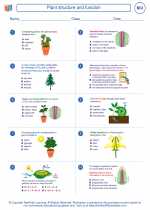Atom's Nucleus
The nucleus is the central part of an atom. It is composed of protons and neutrons, which are collectively referred to as nucleons. The nucleus contains almost all of the mass of an atom but occupies only a tiny fraction of the total volume of the atom. The structure and properties of the nucleus are fundamental to understanding the behavior of atoms and their interactions in chemical and physical processes.
Structure of the Nucleus
The nucleus is made up of protons, which have a positive charge, and neutrons, which have no charge. Protons and neutrons are both composed of smaller particles called quarks. The number of protons in the nucleus determines the element, while the total number of protons and neutrons determines the isotope of the element. The arrangement of protons and neutrons within the nucleus is tightly bound by the strong nuclear force.
Nuclear Forces
The strong nuclear force is the force that holds the protons and neutrons together in the nucleus. It is one of the four fundamental forces of nature, along with gravity, electromagnetism, and the weak nuclear force. The strong nuclear force is responsible for overcoming the electrostatic repulsion between protons, which would otherwise cause the nucleus to fly apart due to the positive charges repelling each other.
Nuclear Stability and Radioactivity
The stability of a nucleus is determined by the balance between the strong nuclear force, which holds the nucleus together, and the repulsive forces between protons. Nuclei that are unstable may undergo radioactive decay, emitting particles and/or energy in order to become more stable. This process can result in the transformation of one element into another, known as transmutation.
Study Guide
- Define the term "nucleus" in the context of an atom.
- Explain the composition of the nucleus, including the roles of protons and neutrons.
- Describe the structure of protons and neutrons at the subatomic level.
- Discuss the significance of the strong nuclear force in holding the nucleus together.
- Explain the concept of nuclear stability and its relationship to radioactive decay.
- Provide examples of nuclear reactions and their impact on the transformation of elements.
Understanding the structure and behavior of the atom's nucleus is crucial for comprehending various aspects of nuclear physics, chemistry, and related fields. Mastery of this topic will provide a solid foundation for further exploration of atomic and subatomic phenomena.
[Atom's Nucleus] Related Worksheets and Study Guides:
.◂Biology Worksheets and Study Guides High School. Plant structure and function

 Worksheet/Answer key
Worksheet/Answer key
 Worksheet/Answer key
Worksheet/Answer key
 Worksheet/Answer key
Worksheet/Answer key
 Vocabulary/Answer key
Vocabulary/Answer key
 Vocabulary/Answer key
Vocabulary/Answer key
